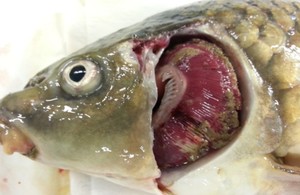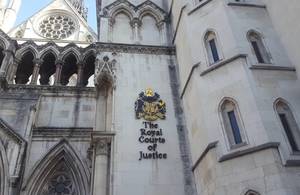Hello everyone, thank you for inviting me to speak to you today. I’m here as the qualifications regulator, as it is our job to make sure that the Apprenticeship End Point Assessments that are in our purview are awarded consistently and fairly and with the apprentice’s interests protected as a priority. So I’d like to focus on three key things this morning from my perspective and then over to you for questions.
Firstly, you will be aware that End Point Assessment Organisations were asked in 2020 to apply to be regulated by Ofqual, as part of the Institute for Apprenticeships and Technical Education’s programme to simplify the quality assurance process – and that ticks off one of the challenges of 2018, Charlotte [Bosworth, who chaired the event]. Many of you here today will have recently been through our recognition process or are perhaps going through it now. I know you are keen to understand how the market will change and develop as a consequence, so I will give you an update and overview today.
Then, following on from that, I want to talk about our approach to regulating End Point Assessments in delivery, and what you can expect from us as the regulator. This will be something that those of you in the room who have been recognised by Ofqual for a while will be very familiar with I’m sure, but I’m conscious as I said, that there are organisations here that are brand new to Ofqual regulation too.
And finally, I just want to talk to you about the importance of data and research and how this informs how we regulate, and how, in turn, I hope it will help drive up quality in the apprenticeship system overall in the future.
EQA transition update
So, to start with, Ofqual recognition. What’s going on? The Institute’s decision two years ago that all apprenticeship assessments should be awarded by organisations that are subject to statutory regulation was, I think, a really important sector development. We are delighted that so many End Point Assessment Organisations, of all shapes and sizes, have come forward to meet the necessarily high bar we set for entering the regulated community.
Out of the approximately 100 organisations that applied to us in the initial phase, we have now recognised 51 to deliver end point assessments, with more applications under review, including 9 EPAOs recently invited to panel meetings. These new organisations, together with the existing operators in the regulated market, means that there are now 110 organisations in total offering regulated end-point assessments, and we are making more decisions each day. We have never received and approved so many applications for recognition in Ofqual’s 12-year history. And this has been done without lowering the bar on quality.
This growth includes organisations who may be here today that are specialists in their respective fields, that have demonstrated they can meet our requirements. They range from niche organisations like the Institute of Cast Metal Engineers, recognised for a single apprenticeship standard – the Metal Casting, Foundry and Patternmaking Technician (I like that example), to those that are broader in scope offering popular standards such as Business Administrator and Associate Project Manager.
The Department for Education (previously, the Education and Skills Funding Agency) is now taking steps to remove End Point Assessment Organisations from their Register if they have not been recognised by Ofqual after two applications. These organisations have not yet demonstrated that they meet our requirements by providing sufficient evidence to us, two years after the announcement was first made. If that sounds a bit tough then it all comes back, for me, to the goal of protecting the quality of assessments for apprentices and their current and potential employers. There is absolutely nothing stopping organisations applying to us at any point in the future, as many times as they like.
I am alive to the risks in the market as it changes, and we remain in close dialogue with the Department and the Institute as they manage these developments. Our work so far has brought more than 95% of apprentices in our first phase into the protection of regulation. We are united as partners in our aims for quality and will continue to prioritise the apprentices themselves as we progress through the programme. We expect apprentices who have started their end point assessment with an EPAO to complete their end point assessment with the same EPAO – the transition process is being very carefully managed, so no apprentice is disadvantaged.
We are now starting to look at applications from organisations that have applied to us as part of the last phase of the programme, the deadline of which was 16 May. We have received applications from all 30 organisations we were expecting to receive, which is great news. Thank you for coming in on time. These applications will now be reviewed, and the outcomes shared with individual organisations and we will continue to provide updates like this on our progress.
I’m confident therefore that there will continue to be a thriving market of End Point Assessment Organisations supporting apprentices in the future. And, of course, I am highly recommending that everyone makes an Ofqual-recognised Awarding Organisation their EPA provider of choice from this point on.
Regulatory approach
The second point I wanted to talk to you about today is what you can expect from us as the regulator.
Many elements of our regulatory approach to End Point Assessment are similar to those used in our regulation of other qualifications. This includes setting the rules and requirements that you must meet as awarding organisations and then monitoring and enforcing those rules. These are elements of our approach across all regulated qualifications and you would expect us to be consistent and coherent across all qualifications.
But apprenticeship assessment is a particular form of assessment. The assessment must meet the requirements set out by employers as articulated in the Apprenticeship Standard and Assessment Plan held by the Institute. Like many vocational qualifications, it is not done en masse in an exam hall but in the field, in workplaces, on site, and at multiple different points in the year. Our regulatory approach is therefore tailored to this unique set of circumstances.
Over the past year we have established our new field team, whose job it is to engage End Point Assessment Organisations directly and take time to understand your approaches to assessment. An important and growing part of this team’s role is to travel to those places where assessment is being carried out and observe apprentices being assessed. From manufacturing environments to hair salons, the team have been welcomed by you and – most crucially – employers, who understand how important it is for Ofqual to see assessments first hand, so we can properly appreciate the hard work that both they and the apprentice put into a meaningful apprenticeship programme. Through this work our aim is to better understand the quality of assessments being offered to apprentices and their experience of them.
We are also establishing sector fora for awarding organisations to collectively share and address issues which some of you have participated in already. We have seen a real willingness to engage, and to work together to resolve problems, for example those offering assessments in financial services, who recently agreed to work jointly on common grade descriptors. We have seen a welcome readiness to adjust approaches to accommodate common practice and this is critical to establishing consistency across awarding organisations and strengthening comparability for apprentices and employers. We also have got a really close feedback loop with the Institute, to make sure that any adjustments needed to Assessment Plans are fed back and acted on.
We call this collaborative working with Awarding Organisations co-regulation and you will hear us talk of this more and more. Yes, we are the regulator, and yes, we have rules that you, they, have to comply with. But there is no reason not to work cooperatively, if you have quality as your shared goal, and the interests of the apprentices themselves as your priority.
Research and data
The last point that I want to mention briefly is the increasing use of research and data in our work in this area. It is so important to us to ensure that vocational and technical qualifications and assessments are properly theorised, researched and documented, so there is a strong evidence base from which they can be understood.
Some of you will be aware of our CASLO research, led by Paul Newton, for example, which looks to thoroughly understand qualifications that confirm the acquisition of specified learning outcomes. We are also looking in to how best to assess ‘soft skills’, behaviours – the ‘highly valued competencies’ that employers demand. These are inherently difficult to assess but incredibly important to get right for employers.
Those of you who have been regulated by Ofqual for some time will know we are now collecting EPA outcome data on an annual basis, which we will publish in due course in line with other qualifications we regulate, once it becomes a significant data set. This will allow us to compare outcomes between EPAOs on the same standard and over time. We hope it will in turn contribute to the national picture we have about apprentices as a cohort of learners and support the system as a whole to develop further.
Conclusion
To conclude then, as I said, I believe that working together cooperatively we can get the best outcomes for apprentices and employers.
We need input and feedback from you, through participation in sector fora and other forums we host, as I said, as well as other direct contact on risks and issues. We will shortly be publishing some new guidance for awarding organisations to support interpretation and understanding of our EPA regulations and clarify some points which have proven unclear since we launched them in 2018. This will be formally open for consultation shortly and we would welcome your views.
And I know that you are all here today because you are interested in cooperating with each other to drive quality. I welcome discussions today about industry best practice, and the work you might do to collectively drive up quality in the system. As the regulator we can play our part in setting a quality baseline, but to really reach the gold standard – that is up to you.
I hope that’s helpful. I’m around all morning to answer your questions.


